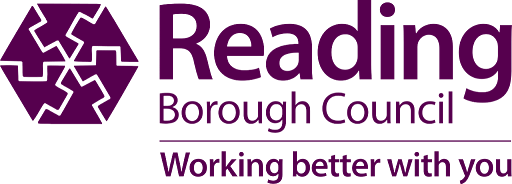Abbey Memorial Plaques Protected for Future Generations
TWO important stone memorial plaques in the Abbey Ruins have received extra protection this month to preserve them from adverse effects of the weather.
The listed memorial plaques, located in the Abbey’s Chapter House, celebrate the abbey’s first and last abbots, Hugh de Boves and Hugh of Faringdon. The Council’s conservation contractors installed stainless steel weather canopies over the memorial plaques on 15th January, as part of the ongoing work to preserve the abbey for future generations. The work also included improvements to the steel mounts on the carved stones along the Cloister walk. This protection work follows on from the annual winter conservation in November 2018 on low level sections of the dormitory walls, using a medieval technique of hot lime mortar, similar to the methods used in the original construction of abbey almost 900 years ago. This work is due to be repeated in spring when the conservation team will check for loose flint at a higher level.Cllr Sarah Hacker, Reading’s Lead Member for Culture, Heritage and Recreation, said:
“In the Abbey Quarter, Reading boasts a site of national significance. Last summer the Council fulfilled its long-standing ambition to preserve these important ruins and open the abbey to the public. The ongoing conservation work is part of our commitment to maintaining the ruins for future generations to appreciate. “If you haven’t yet been down to the reopened Abbey Ruins, I thoroughly recommend you take a stroll there and explore the beautiful surroundings and see these fascinating plaques up close. You can also find out more about the history of the abbey at our wonderful Reading Museum, which is a short walk away from the ruins. “Last year we enjoyed an exciting programme of events and activities centred around the ruins and there is even more to look forward to this year.”Ends
Notes
History of the memorial plaques
The memorial plaques were installed by Dr Jamieson Boyd Hurry, a local physician and author, with a passion for local history, in 1911. Dr Hurry is also responsible for Henry I memorial stone, located on a wall of the abbey church and the third memorial plaque in the chapter house, which celebrates one of the oldest songs in the English language ‘Sumer is i-cumen in’ – and was written down in a 13th-century manuscript book kept at the abbey and is said to be the first usage of the word ‘fart’ in written English! From 1909, Dr Hurry commissioned a series the paintings showing artistic impressions of important events in the Abbey’s History. These are displayed in the Museum and Town Hall building and include ‘The Martyrdom of Hugh Faringdon, last Abbot of Reading’, painted by Harry Morley in 1917. The painting is located at the foot of the main staircase in Reading Museum. Hugh Faringdon was accused of denying King Henry VIII’s title to be head of the Church in England and was found guilty of treason. He was sentenced to death by being drawn, hanged, disembowelled and beheaded. Find out more at www.readingmuseum.org.ukConservation in the Ruins
The ruins closed in 2009 when their deteriorating condition led to large pieces of flint falling from the walls. In February 2017 specialist conservation work began to conserve the ruins and to prevent further deterioration. This included three key elements: add soft capping to the tops of the walls to prevent water penetration, consolidate the rubble walls to prevent further flint falling and restore fallen flint to improve stability. The team returned to the methods used in the original construction of the Abbey almost 900 years ago. As far as is practical with modern materials, this means a return to a simple ‘hot’ mix of quicklime (the material name for calcium oxide) and sand. This is hot mixed lime mortar, perfect for the tricky work of consolidating the irregular and crumbling surfaces of the ruins.Reading Abbey Revealed
Reading Abbey Revealed is a major project, made possible through £1.77 million funding support thanks to National Lottery players and the Heritage Lottery Fund and match funding of £1.38million from Reading Borough Council. The Abbey Quarter in central Reading brings together nationally important heritage within the former grounds of Reading Abbey, once one of Europe’s largest royal monasteries. The conservation of the Grade I listed, scheduled Abbey Ruins and Abbey Gateway are central to Reading Council’s vision to transform the Abbey Quarter into a unique historical destination. Visitors to the Abbey Quarter and Reading Museum can benefit from an exciting series of events and activities, including Reading Abbey Quarter Tours, Abbey Gateway Tours,Victorian Schoolroom Experience sessions. People can find out more about the project by visiting the Abbey Quarter’s website www.readingabbeyquarter.org.uk Facebook Page www.facebook.com/ReadingAbbeyQuarter or by following them on twitter @RdgAbbey For more information on what’s on in the Abbey Quarter, visit: www.readingabbeyquarter.org.uk/abbey/whats-onAbout the Heritage Lottery Fund
Thanks to National Lottery players, we invest money to help people across the UK explore, enjoy and protect the heritage they care about – from the archaeology under our feet to the historic parks and buildings we love, from precious memories and collections to rare wildlife. www.hlf.org.uk Follow them on Twitter, Facebook and Instagram #HLFsupported